| COINOTAG recommends • Exchange signup |
| 💹 Trade with pro tools |
| Fast execution, robust charts, clean risk controls. |
| 👉 Open account → |
| COINOTAG recommends • Exchange signup |
| 🚀 Smooth orders, clear control |
| Advanced order types and market depth in one view. |
| 👉 Create account → |
| COINOTAG recommends • Exchange signup |
| 📈 Clarity in volatile markets |
| Plan entries & exits, manage positions with discipline. |
| 👉 Sign up → |
| COINOTAG recommends • Exchange signup |
| ⚡ Speed, depth, reliability |
| Execute confidently when timing matters. |
| 👉 Open account → |
| COINOTAG recommends • Exchange signup |
| 🧭 A focused workflow for traders |
| Alerts, watchlists, and a repeatable process. |
| 👉 Get started → |
| COINOTAG recommends • Exchange signup |
| ✅ Data‑driven decisions |
| Focus on process—not noise. |
| 👉 Sign up → |
TRON network activity is rising: the blockchain now records 9–10 million daily transactions, $25 billion in USDT transfers and 15.1 million 30‑day active accounts, signaling strong on‑chain usage even as TRX faces short‑term selling pressure that could push price toward $0.32.
-
9–10M daily transactions and 15.1M active accounts indicate usage-driven growth
-
USDT transfers on TRON formed a $25B baseline in transaction volume, lifting overall throughput.
-
Spot Taker CVD shows a -35M Delta (206M sell vs 171M buy), pressuring TRX price near $0.32.
TRON network activity surges: 9–10M daily txns, $25B USDT flow and 15.1M active accounts — COINOTAG analysis of on‑chain metrics and TRX price impact. Read the data‑led breakdown.
What is driving TRON network activity?
TRON network activity is driven primarily by heavy stablecoin flows and rising user interactions. Daily transactions averaged 9–10 million in September and USDT transfers on TRON totaled about $25 billion, underscoring use cases such as remittances, exchanges and dApp throughput.
| COINOTAG recommends • Professional traders group |
| 💎 Join a professional trading community |
| Work with senior traders, research‑backed setups, and risk‑first frameworks. |
| 👉 Join the group → |
| COINOTAG recommends • Professional traders group |
| 📊 Transparent performance, real process |
| Spot strategies with documented months of triple‑digit runs during strong trends; futures plans use defined R:R and sizing. |
| 👉 Get access → |
| COINOTAG recommends • Professional traders group |
| 🧭 Research → Plan → Execute |
| Daily levels, watchlists, and post‑trade reviews to build consistency. |
| 👉 Join now → |
| COINOTAG recommends • Professional traders group |
| 🛡️ Risk comes first |
| Sizing methods, invalidation rules, and R‑multiples baked into every plan. |
| 👉 Start today → |
| COINOTAG recommends • Professional traders group |
| 🧠 Learn the “why” behind each trade |
| Live breakdowns, playbooks, and framework‑first education. |
| 👉 Join the group → |
| COINOTAG recommends • Professional traders group |
| 🚀 Insider • APEX • INNER CIRCLE |
| Choose the depth you need—tools, coaching, and member rooms. |
| 👉 Explore tiers → |
How do on‑chain metrics compare to user retention?
On‑chain growth contrasts with weak retention. Active Accounts (30D) reached 15.1 million while Total Accounts rose to 300.4 million. However, cohort retention fell sharply — Artemis reports monthly cohort retention down from 19% to 2% — suggesting many users transact once and churn soon after.
| COINOTAG recommends • Exchange signup |
| 📈 Clear interface, precise orders |
| Sharp entries & exits with actionable alerts. |
| 👉 Create free account → |
| COINOTAG recommends • Exchange signup |
| 🧠 Smarter tools. Better decisions. |
| Depth analytics and risk features in one view. |
| 👉 Sign up → |
| COINOTAG recommends • Exchange signup |
| 🎯 Take control of entries & exits |
| Set alerts, define stops, execute consistently. |
| 👉 Open account → |
| COINOTAG recommends • Exchange signup |
| 🛠️ From idea to execution |
| Turn setups into plans with practical order types. |
| 👉 Join now → |
| COINOTAG recommends • Exchange signup |
| 📋 Trade your plan |
| Watchlists and routing that support focus. |
| 👉 Get started → |
| COINOTAG recommends • Exchange signup |
| 📊 Precision without the noise |
| Data‑first workflows for active traders. |
| 👉 Sign up → |
Why are transactions and stablecoin flows increasing on TRON?
Stablecoins — primarily USDT — are the primary throughput drivers. Artemis data show USDT transfers on TRON formed a $25 billion baseline, supporting decentralized exchanges, payment rails and high‑frequency transfers. CryptoQuant data also confirm daily transactions stayed between 9 and 10 million throughout September.
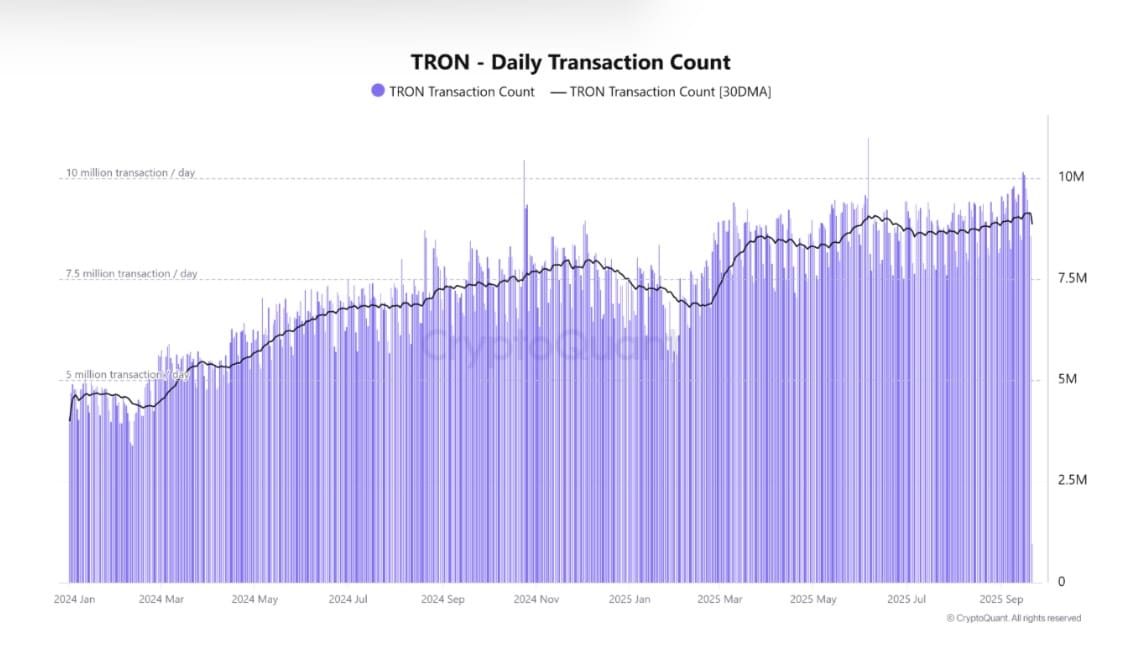
| COINOTAG recommends • Traders club |
| ⚡ Futures with discipline |
| Defined R:R, pre‑set invalidation, execution checklists. |
| 👉 Join the club → |
| COINOTAG recommends • Traders club |
| 🎯 Spot strategies that compound |
| Momentum & accumulation frameworks managed with clear risk. |
| 👉 Get access → |
| COINOTAG recommends • Traders club |
| 🏛️ APEX tier for serious traders |
| Deep dives, analyst Q&A, and accountability sprints. |
| 👉 Explore APEX → |
| COINOTAG recommends • Traders club |
| 📈 Real‑time market structure |
| Key levels, liquidity zones, and actionable context. |
| 👉 Join now → |
| COINOTAG recommends • Traders club |
| 🔔 Smart alerts, not noise |
| Context‑rich notifications tied to plans and risk—never hype. |
| 👉 Get access → |
| COINOTAG recommends • Traders club |
| 🤝 Peer review & coaching |
| Hands‑on feedback that sharpens execution and risk control. |
| 👉 Join the club → |
CryptoQuant shows a 30‑day moving average above 9 million daily transactions, roughly a 20% increase from January levels. This sustained throughput points to repeatable transactional demand even when token price momentum is weak.
How does user growth reconcile with low retention?
Growth metrics are top‑line while retention metrics reveal churn. Dune reports 15.1 million 30‑day active accounts, but Artemis cohort analysis shows retention declines — the May 2025 cohort included 6.2 million entrants and only ~12% remained by August 2025. This pattern suggests many users perform one‑off actions rather than staying active month to month.
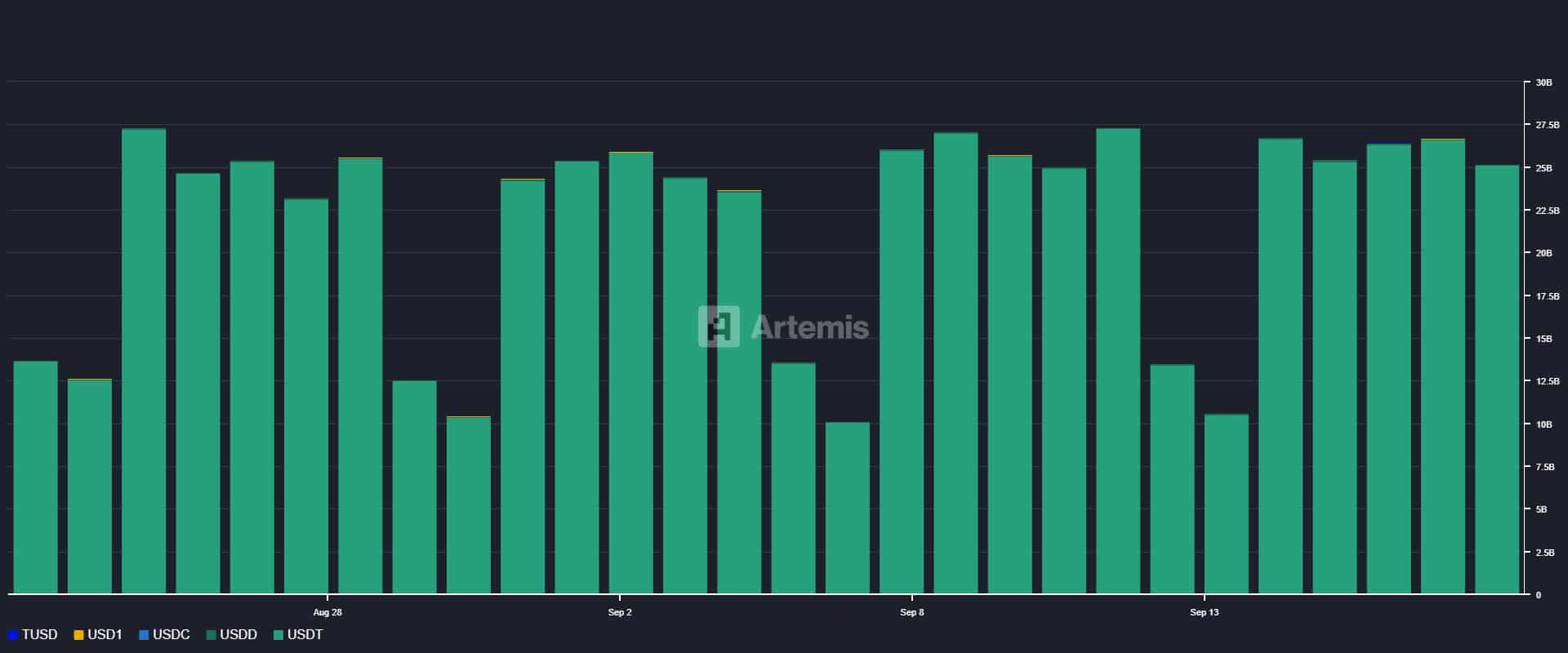
Higher transaction volume with low retention can be driven by exchange flows, airdrops, token migrations or single‑purpose dApp activity. Data sources referenced: CryptoQuant, Artemis, Dune and COINOTAG (plain text references).
| COINOTAG recommends • Exchange signup |
| 📈 Clear control for futures |
| Sizing, stops, and scenario planning tools. |
| 👉 Open futures account → |
| COINOTAG recommends • Exchange signup |
| 🧩 Structure your futures trades |
| Define entries & exits with advanced orders. |
| 👉 Sign up → |
| COINOTAG recommends • Exchange signup |
| 🛡️ Control volatility |
| Automate alerts and manage positions with discipline. |
| 👉 Get started → |
| COINOTAG recommends • Exchange signup |
| ⚙️ Execution you can rely on |
| Fast routing and meaningful depth insights. |
| 👉 Create account → |
| COINOTAG recommends • Exchange signup |
| 📒 Plan. Execute. Review. |
| Frameworks for consistent decision‑making. |
| 👉 Join now → |
| COINOTAG recommends • Exchange signup |
| 🧩 Choose clarity over complexity |
| Actionable, pro‑grade tools—no fluff. |
| 👉 Open account → |
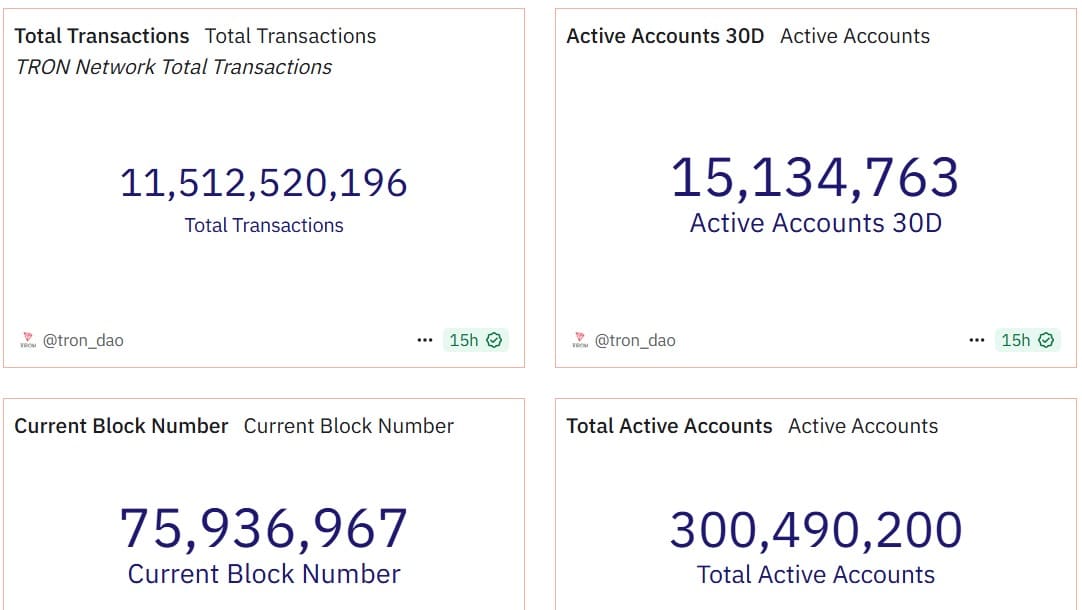
How is on‑chain activity affecting TRX market dynamics?
Despite rising network metrics, TRX price has seen selling pressure. Spot Taker CVD indicates seller dominance with a -35 million Delta, and Coinalyze reports 206 million in Sell Volume vs 171 million Buy Volume in 24 hours. Historically, persistent selling in spot markets tends to precede downward price moves.
| COINOTAG recommends • Members‑only research |
| 📌 Curated setups, clearly explained |
| Entry, invalidation, targets, and R:R defined before execution. |
| 👉 Get access → |
| COINOTAG recommends • Members‑only research |
| 🧠 Data‑led decision making |
| Technical + flow + context synthesized into actionable plans. |
| 👉 Join now → |
| COINOTAG recommends • Members‑only research |
| 🧱 Consistency over hype |
| Repeatable rules, realistic expectations, and a calmer mindset. |
| 👉 Get access → |
| COINOTAG recommends • Members‑only research |
| 🕒 Patience is an edge |
| Wait for confirmation and manage risk with checklists. |
| 👉 Join now → |
| COINOTAG recommends • Members‑only research |
| 💼 Professional mentorship |
| Guidance from seasoned traders and structured feedback loops. |
| 👉 Get access → |
| COINOTAG recommends • Members‑only research |
| 🧮 Track • Review • Improve |
| Documented PnL tracking and post‑mortems to accelerate learning. |
| 👉 Join now → |
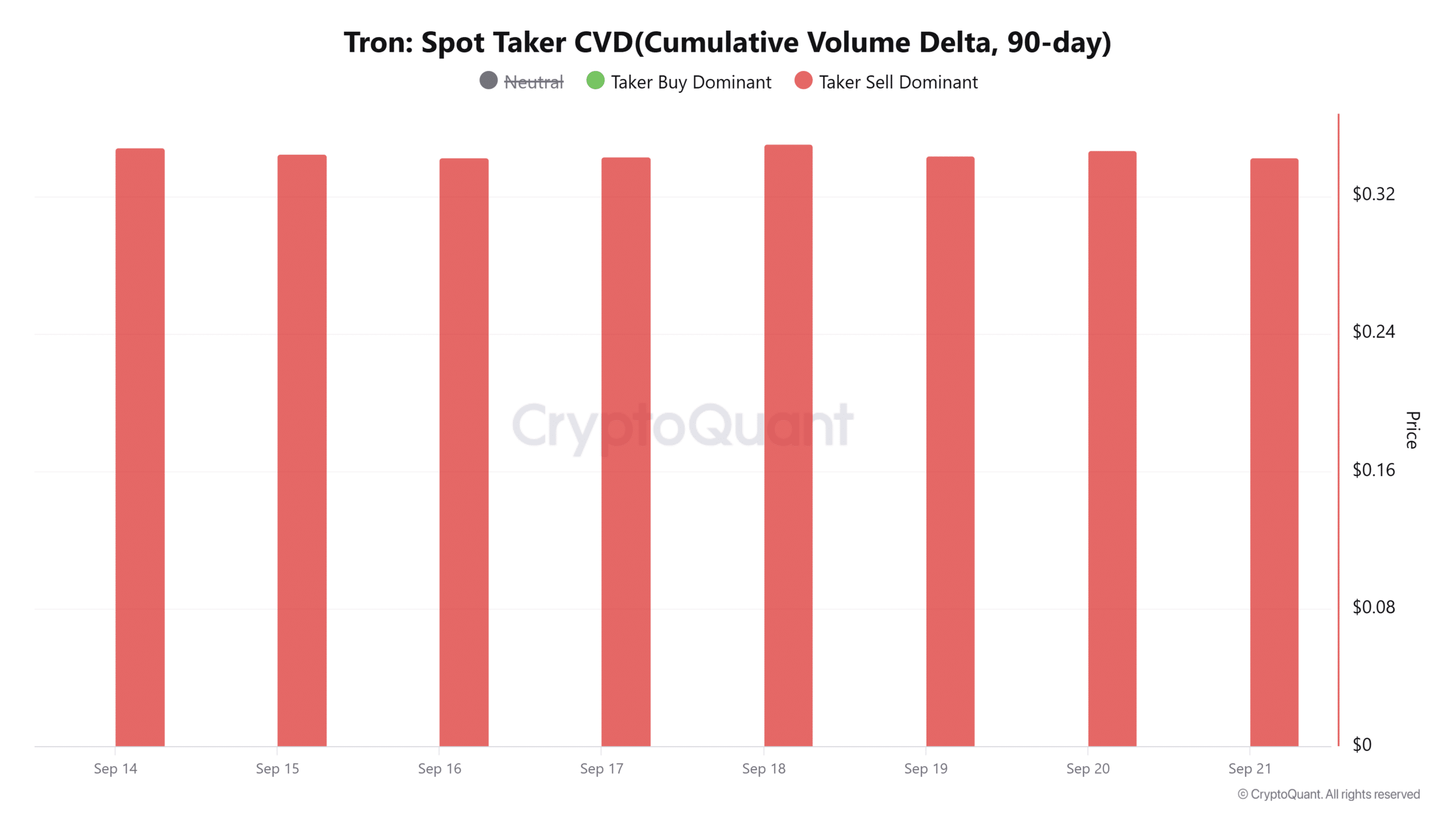
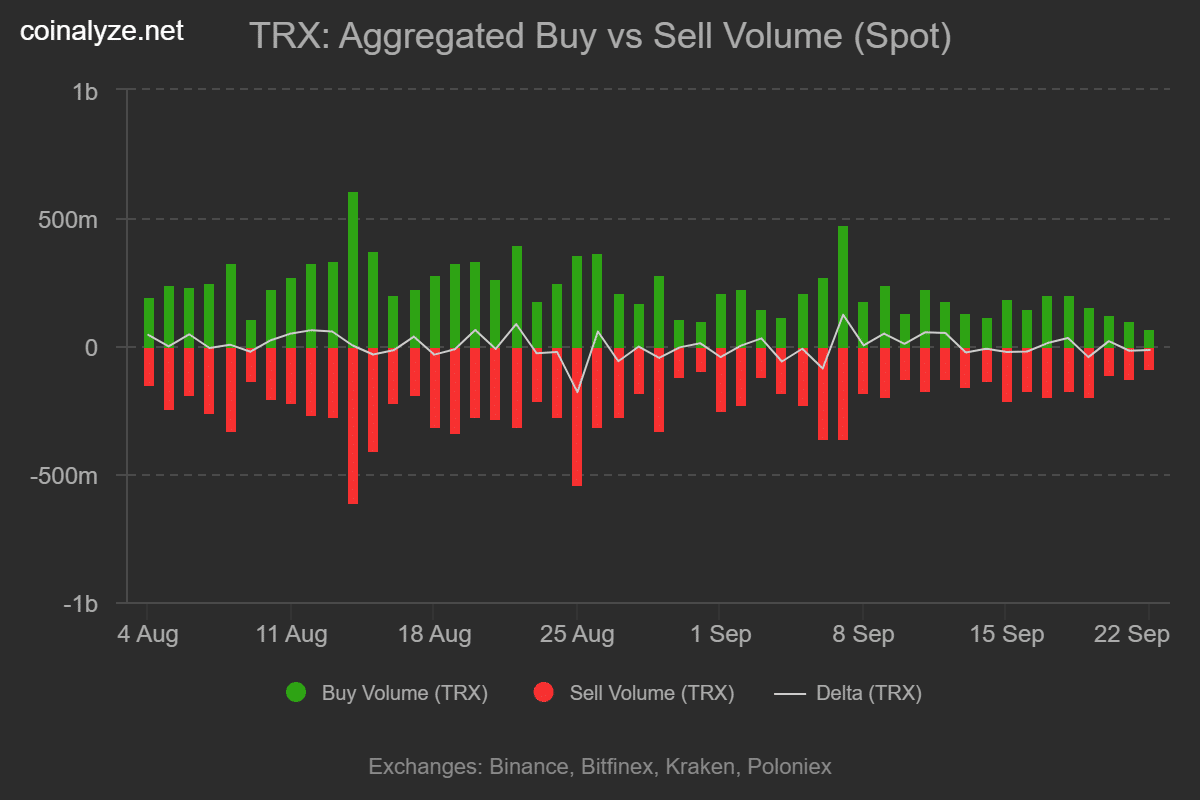
| COINOTAG recommends • Exchange signup |
| 🎯 Focus on process over noise |
| Plan trades, size positions, execute consistently. |
| 👉 Sign up → |
| COINOTAG recommends • Exchange signup |
| 🛠️ Simplify execution |
| Keep decisions clear with practical controls. |
| 👉 Get started → |
| COINOTAG recommends • Exchange signup |
| 📊 Make data your edge |
| Use depth and alerts to avoid guesswork. |
| 👉 Open account → |
| COINOTAG recommends • Exchange signup |
| 🧭 Be prepared, not reactive |
| Turn setups into rules before you trade. |
| 👉 Create account → |
| COINOTAG recommends • Exchange signup |
| ✍️ Plan first, then act |
| Entries, exits, and reviews that fit your routine. |
| 👉 Join now → |
| COINOTAG recommends • Exchange signup |
| 🧩 Consistency beats intensity |
| Small, repeatable steps win the long run. |
| 👉 Sign up → |
Price scenarios:
-
Bearish: Continued seller dominance could push TRX toward $0.32 support.
-
Bullish: If network usage converts to user retention and buy‑side conviction, TRX may test $0.35 resistance.
Frequently Asked Questions
| COINOTAG recommends • Premium trading community |
| 🏛️ WAGMI CAPITAL — Premium Trading Community |
| Strategic insights, exclusive opportunities, professional support. |
| 👉 Join WAGMI CAPITAL → |
| COINOTAG recommends • Premium trading community |
| 💬 Inner Circle access |
| See members share real‑time PnL and execution notes in chat. |
| 👉 Apply for Inner Circle → |
| COINOTAG recommends • Premium trading community |
| 🧩 Turn theses into trades |
| Reusable templates for entries, risk, and review—end to end. |
| 👉 Join the club → |
| COINOTAG recommends • Premium trading community |
| 💡 Long‑term mindset |
| Patience and discipline over noise; a process that compounds. |
| 👉 Get started → |
| COINOTAG recommends • Premium trading community |
| 📚 Education + execution |
| Courses, playbooks, and live market walkthroughs—learn by doing. |
| 👉 Get access → |
| COINOTAG recommends • Premium trading community |
| 🔒 Members‑only research drops |
| Curated analyses and private briefings—quality over quantity. |
| 👉 Join WAGMI CAPITAL → |
What should traders and users watch next?
Monitor daily Spot Taker CVD and sell/buy volume, cohort retention (monthly), and stablecoin transfer totals. A shift to net buy flow plus higher retention would be the clearest sign that network usage is starting to support TRX price.
Key Takeaways
- On‑chain growth: TRON records 9–10M daily transactions and 15.1M active accounts, driven by stablecoin flows.
- Retention risk: Monthly cohort retention collapsed from 19% to 2%, indicating high churn despite activity spikes.
- Market pressure: Spot Taker CVD shows seller dominance (-35M Delta); persistent selling could push TRX toward $0.32.
Conclusion
COINOTAG analysis shows TRON’s on‑chain activity is robust in volume and users, led by USDT transfers and elevated transactions. However, weak retention and current spot selling keep TRX under short‑term pressure. Watch retention metrics and net taker flows for the clearest signal of a sustainable price reversal.
| COINOTAG recommends • Exchange signup |
| 🧱 Execute with discipline |
| Watchlists, alerts, and flexible order control. |
| 👉 Sign up → |
| COINOTAG recommends • Exchange signup |
| 🧩 Keep your strategy simple |
| Clear rules and repeatable steps. |
| 👉 Open account → |
| COINOTAG recommends • Exchange signup |
| 🧠 Stay objective |
| Let data—not emotion—drive actions. |
| 👉 Get started → |
| COINOTAG recommends • Exchange signup |
| ⏱️ Trade when it makes sense |
| Your plan sets the timing—not the feed. |
| 👉 Join now → |
| COINOTAG recommends • Exchange signup |
| 🌿 A calm plan for busy markets |
| Set size and stops first, then execute. |
| 👉 Create account → |
| COINOTAG recommends • Exchange signup |
| 🧱 Your framework. Your rules. |
| Design entries/exits that fit your routine. |
| 👉 Sign up → |
Author: COINOTAG | Published: 2025‑09‑22 | Updated: 2025‑09‑22
| COINOTAG recommends • Members‑only research |
| 📌 Curated setups, clearly explained |
| Entry, invalidation, targets, and R:R defined before execution. |
| 👉 Get access → |
| COINOTAG recommends • Members‑only research |
| 🧠 Data‑led decision making |
| Technical + flow + context synthesized into actionable plans. |
| 👉 Join now → |
| COINOTAG recommends • Members‑only research |
| 🧱 Consistency over hype |
| Repeatable rules, realistic expectations, and a calmer mindset. |
| 👉 Get access → |
| COINOTAG recommends • Members‑only research |
| 🕒 Patience is an edge |
| Wait for confirmation and manage risk with checklists. |
| 👉 Join now → |
| COINOTAG recommends • Members‑only research |
| 💼 Professional mentorship |
| Guidance from seasoned traders and structured feedback loops. |
| 👉 Get access → |
| COINOTAG recommends • Members‑only research |
| 🧮 Track • Review • Improve |
| Documented PnL tracking and post‑mortems to accelerate learning. |
| 👉 Join now → |












